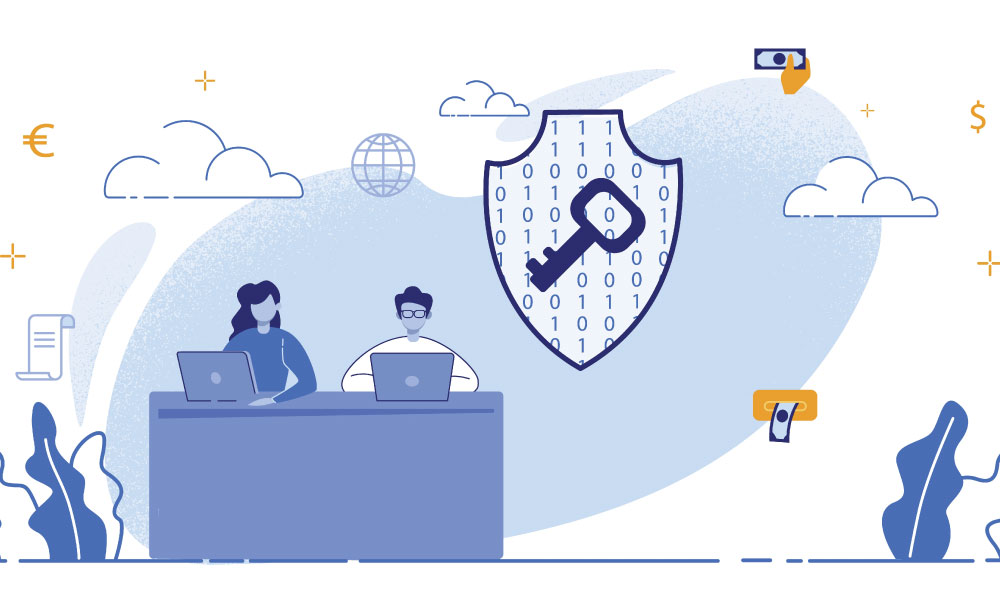Increasing demand for digital solutions has both non-financial businesses and fintechs alike delegating infrastructure and expertise of financial services to Banking-as-a-Service as a shortcut to bring new products & services to market more quickly and at a lower cost.
The pandemic has accelerated the adoption of digital solutions across industries, notably in e-commerce, which is forecasted to reach $92 billion in global financial transactions by 2025. The hyper-growth of the sector continues to push brands and marketplaces to build financial services into their platforms. In fact, some researchers predict that embedding financial services into platforms for enhanced user experience will see 182% growth in the next 5 years.
Changing consumer preferences have also impacted other industries, including traditional finance. Digital banking has become the main method of financial interaction for many consumers worldwide, with the pandemic accelerating this shift, as almost 75% of consumers now use digital channels to open accounts, particularly through mobile apps. While this shift in consumer behavior pushed forward the need for more digital financial solutions, the recent regulatory changes and drop of investment in the fintech industry made entering the financial services sector more complex and resource-intensive.
Both cohorts: the customer-facing, nonfinancial brands that are looking for embedded finance capabilities, and FinTechs that are typically the technology providers facilitating innovative digital solutions are increasingly turning to Banking-as-a-Service (BaaS) to fast-track their business operations. Experts indicate that the industry is expanding by 26% annually. ConnectPay, an all-in-one finance platform for online businesses, reports a 350% increase in inquiries for BaaS when comparing Q1 of 2022 and Q1 of 2023.
Cost saving with Banking-as-a-Service for Fintechs
Banking-as-a-Service effectively allows non-bank institutions to offer branded (“white-label”) financial services without going through the difficult and costly process of obtaining their own banking licenses. For example, at a minimum, the process of obtaining an Electronic Money Institution (EMI) license can take up to a year and cost more than a million euros. The worst part, even going after the arduous process of getting a license, businesses are not always successful.
BaaS providers will have already taken on the costs associated with obtaining the proper licenses, allowing companies to use an existing license to quickly roll out their own financial products, such payment processing, and money transfers. With investments in fintech on the decline in recent years, the importance of reducing costs cannot be overstated.
BaaS benefits to brands
BaaS can be a game-changer for brands that want to increase their efficiency and competitiveness in the digital economy. By leveraging the power of banking services and technology, brands can focus on what they do best and create more value for their customers and stakeholders.
A few years ago, Venture capitalists, such as Angela Strange at Andreessen Horowitz encouraged companies in all industries to consider embedded finance, “making every company a fintech company.” While the idea of turning every business into a fintech may seem enticing, the associated costs due to regulatory requirements and time investment make it a less efficient option.
In turn, several brands have resorted to outsourcing embedded finance requirements to specialized BaaS providers. For example, rideshare services that offer digital wallets or debit cards to their drivers, can turn to BaaS providers to set up payouts infrastructure or help with compliance management. The primary advantage of this approach is that it allows brands to concentrate on their core priorities such as enhancing customer experience, while the optimization of financial services is entrusted to experts, thereby facilitating a more streamlined and efficient business operation.
Choosing a BaaS provider
Given the advantages of BaaS, it is no wonder international brands and marketplaces alike are seeking to embed financial products into their existing interfaces. Doing so successfully, however, requires that a company first choose a suitable BaaS provider.
According Simas Simanauskas, Chief Business Officer at ConnectPay, a good BaaS provider will not only address a client’s present needs but also have the resources at hand to adapt to their future growth. “Through strategic partnerships, a good BaaS provider can offer its clients a wide range of services, to ensure that they remain responsive in a rapidly changing market.”
The success of a brand can very well depend on the strength of a BaaS provider’s partnerships and their ability to facilitate the quick deployment of new financial products. For example, a BaaS provider can offer access to ready-made banking software through an established and well-vetted partnership to facilitate in a matter of weeks something as complex as the launching of neobank.
Compliance-as-a-Service
In an ever-evolving regulatory landscape, it is crucial that fintechs stay compliant with the policies governing their service areas. But doing so is a complex and resource-intensive process, given that policies can differ considerably between monetary zones and the penalties for oversight can be disastrous. One solution that BaaS providers are beginning to offer is known as “compliance-as-a-service.”
By dedicating their own resources and personnel to the complex and resource-intensive process of maintaining compliance with regulatory requirements, BaaS providers allow non-bank institutions to concentrate on creating value for the customer on their platforms by allowing frictionless movement of funds. Moreover, when compliance-as-a-service is a built-in part of a BaaS providers’ offerings, brands are able to minimize the risks associated with vetting and maintaining the number of partnerships typically necessary to ensure compliance. Services like remote identification, transaction monitoring, regulatory reporting, and ongoing due diligence can rarely be provided by a single vendor.
 Conclusion
Conclusion
In a fast-paced and constantly shifting market, fintechs must be able to quickly deliver new products and adapt to changes in their customers’ needs. With BaaS offering end-to-end solutions, it has never been easier to integrate payments into consumer-facing platforms.





